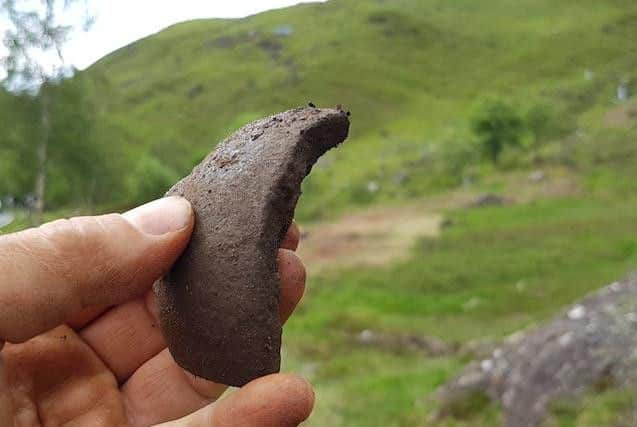Artefacts discovered at site of 'forgotten' 18th century Jacobite battle
The team of archaeologists have been working at Glenshiel, near Kyle of Lochalsh in the Highlands, and uncovered several large fragments of shots which were aimed at Lord George Murray and the Jacobite right wing on the knoll south of the River Shiel.
Artefacts consist of coehorn mortar shells and a musket ball fired by government forces at the Jacobites.
Advertisement
Hide AdAdvertisement
Hide AdThe Battle of Glenshiel, on June 10 1719, was the decisive loss which ended James Francis Edward Stuart's ambitions to take the throne.


It saw force of over 1,000 Jacobites, including troops sent from Spain, attempt to restore "the Old Pretender" to the throne of Great Britain.
Derek Alexander, National Trust of Scotland (NTS) head of archaeology, said: "This is the first positive piece of evidence that we have found from the battle.
"We were excavating just below the Spanish position, where there is quite a large outcrop of bedrock with a vertical face.
"We picked up a strong signal with the metal detector and, working with Historic Environment Scotland we were allowed to excavate four or five objects.
"The first that we looked at was the musket ball.
"It had been fired from below, up at the Spanish position. It hit the bedrock, flattened and fell to the ground and lay there. It was fired three hundred years ago, hit the wall and fell to the ground. Now it has been found."
The coehorn was a small squat gun that could lob shells in high arcs onto the Jacobite and Spanish positions causing noise and explosions that must have caused disorder and panic in some of the Jacobites.
One reference also suggests the grass and heather was set alight by the red-hot fragments, adding to the confusion.
Advertisement
Hide AdAdvertisement
Hide AdThe Battle of Glenshiel was the first time that the device had been used on British soil, making it an exciting find for the team.
Mortar shells also confirm the interpretation of a smaller fragment found on the north side of the river last year.
Tests will now be carried out to determine the calibre of the ball and just who fired it, with government troops using a variety of muskets or carbines.
Finds such as this allow historians to create a fuller picture of just what happened on the day of the battle and to bring the events to life.
In the wake of the defeat the Jacobites were scattered, with several of their leaders going back into exile on the continent. The Spanish troops were captured, marched to Edinburgh Castle where they were held before eventually being released later in the year.
The anniversary was marked at the weekend by a gathering of clans on the site and while the 1719 rebellion is often overlooked, compared to the risings of 1714 and 1745, the defeat had a lasting impact on both the Highlands and the Jacobite cause.
Mr Alexander added: "The rising fizzled out, but it led to the arrival General Wade and his building of the road systems and garrisons in locations across the Highlands. It fixed the Government's minds on the clans and the Jacobites.
"It's failure also meant that there was little appetite for another uprising until Bonnie Prince Charlie and the '45.
"It effectively put paid to Jacobite ambitions for 30 years, which is a long time."